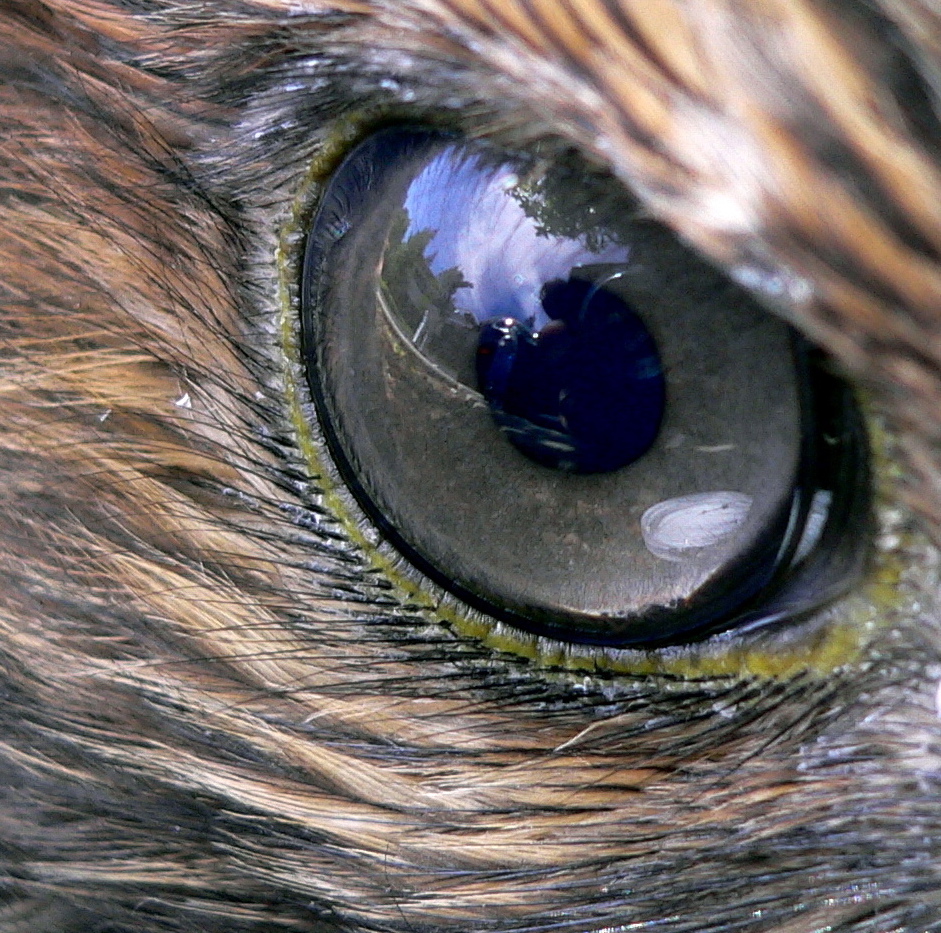The eyes of bird are very large in correlation with an aerial life for a precise vision over considerable distance.
The eyeball is not round but partly concave in front and biconvex sideways, the cornea projects outwards and the posterior part is expanded so that the eye is broader than deep.
ADVERTISEMENTS:
The retina lies in the broad posterior portion so that distant objects are sharply fbcussed on it.
Though the eyes are lateral in position there is an overlapping of the two visual fields to some extent, and in birds of prey, such as owls and eagles, the two visual fields overlap to a much greater degree so that there is binocular vision.
The sclerotic has a ring of sclerotic bones surrounding the eyeball in the region of the ciliary body, the cornea bulges outwards.
The iris has striated sphincter muscles for intense contraction. The retina has rods and cones, in diurnal birds cones are predominant, but rods outnumbei cones in nocturnal birds Colour vision is highly developed.
ADVERTISEMENTS:
The retina has an area centralis with a fovea centralis, in some birds there is more than one area centralis and fovea which explains the great visual acuteness of birds and they can detect the smallest movements.
The lens is biconvex and soft. The ciliary body is well formed with ciliary processes attached to the lens capsule, it has striated ciliary muscles divided into anterior Crampton muscles and posterior Brucke muscle.
In accommodation for near objects the Brucke muscles and ciliary processes draw the lens forward increasing the curvature of its anterior surface, and at the same time the Crampton muscles pull the cornea reducing its curvature.
Arising at the blind spot from the choroid is a pleated, highly vascular, serrated, and pigmented pecten, it is more developed in diurnal birds than in nocturnal ones.
ADVERTISEMENTS:
There are many speculations
about the function of pecten but none is known definitely, it may perform its original function of nourishing the retina by diffusion through the vitreous humour.
The other functions attributed to it are, (a) it helps in accommodation by pressing the lens forwards, (b) it regulates the pressure of fluids in the eye, (c) its shadow falls on the retina and aids in the perception of movements, (d) it supplies additional nourishment to the retina.
The two eyelids are well-developed which do not blink though they are closed in sleep. The third eyelid or nictitating membrane is attached below the other two eyelids, it keeps the cornea and other eyelids clean, it is lubricated by a Harderian gland in the inner angle of the eye.
In flight the nictitating membrane covers and protects the cornea like goggles. Lacrimal glands are well developed and lie below the outer angle of lower eyelid.

